|
The Army built the first Endicott-era fortification at Fort Slocum near the southern end of Davids Island. This structure was the 2.9-acre Mortar Battery, also called Battery Haskin-Overton. Construction began in 1891, and the battery became operational in 1897.
The battery had 16 seacoast mortars grouped in clusters of four, known as Abbot quads. These were heavy artillery pieces, designed to fire a 12-inch-diameter shell weighing 800 pounds accurately to a distance of 5.5 miles. Seacoast mortars were far larger than the more familiar portable infantry mortars of modern armies.
Col. Abbot’s Concept
The Abbot quad design used at Fort Slocum was based on the ideas of Col. Henry L. Abbot of the U.S. Army Corps of Engineers. In the 1880s Abbot recognized that despite the steady increase in the thickness of warship hull armor, their decks remained unprotected or lightly armored. Lack of heavy deck armor made ships vulnerable to attack from above.
Fort Slocum’s mortars fired shells in high, arcing trajectories well-suited for attacking ships’ decks. Firing clusters of mortars simultaneously created a shotgun-like grouping of shells and increased the chance of striking a target.
Mortar Battery
01-Mortar Battery Plan Dwg 04151920 crSketch plan of Fort Slocum's Mortar Battery, 1920, showing the four pits for the groups of heavy mortars and the connecting tunnels (courtesy Coast Defense Study Group). 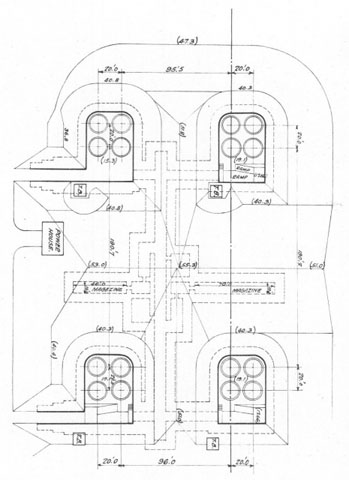  02-Mortar Pit Revetment SectionCross-section sketch of a mortar pit, 1895. 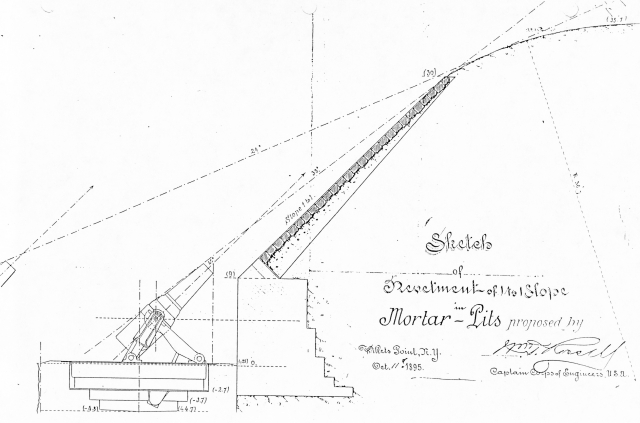  03-aerial 1924 24 aug hi alt 300 dpi cVertical aerial photograph of Fort Slocum's Mortar Battery and its surroundings, August 1924.   04-aerial 1932 11 jan horse corral Battery PractiOblique aerial photograph of Fort Slocum's Mortar Battery, looking north, January 1932.   05-Key West 12-inch readyThe heavy mortars in a pit similar to those of Fort Slocum at Battery Seminole, Fort Taylor, Key West, Florida, circa 1918. 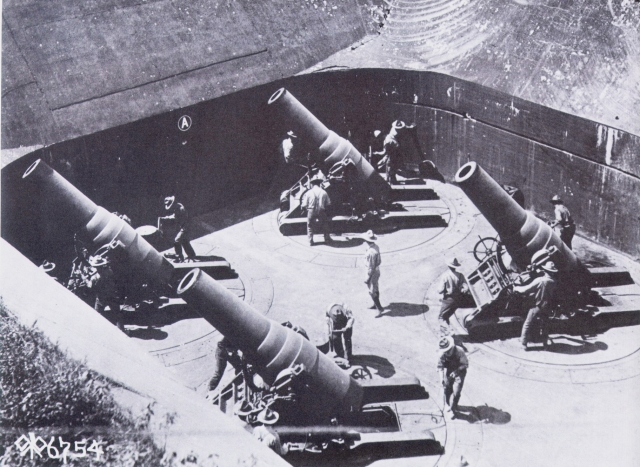  06-Key West 12-inch congestionThe crowding of four mortar crews in a pit measuring about 40 by 60 feet, Battery Seminole, Fort Taylor, Key West, Florida, circa 1918. 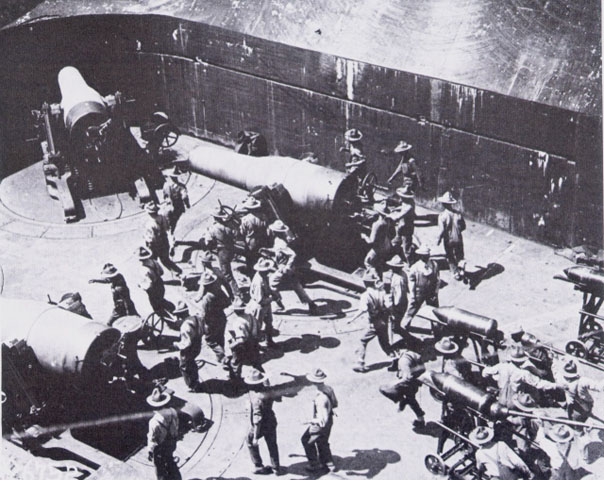  07-127 147Fort Slocum's Battery Overton, Pit B (Building 127), looking southwest, November 2005. 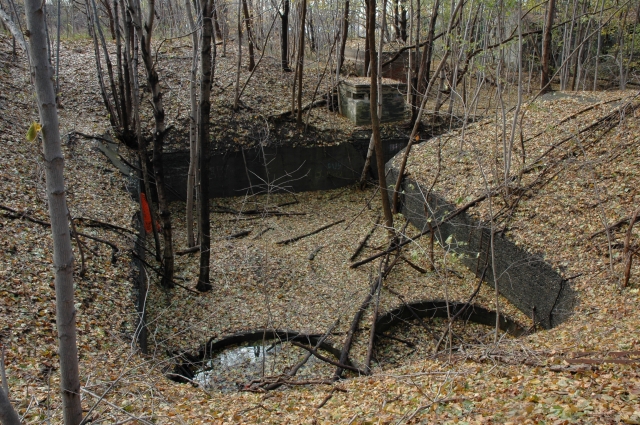  08-IMGP0618Exposed bedrock, which forms southern wall of Battery Haskin Pit A (Building 125), looking southwest, December 2008. 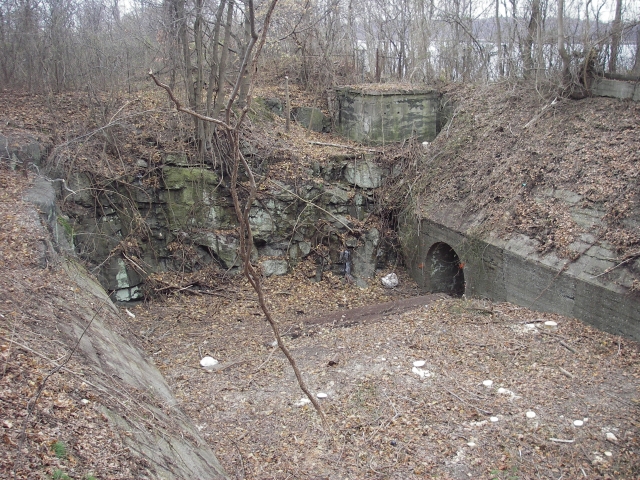  09-IMGP0504rA typical steep concrete wall of one of the pits of Fort Slocum's Mortar Battery: Battery Haskin Pit B (Building 126), looking south-southwest, December 2008. 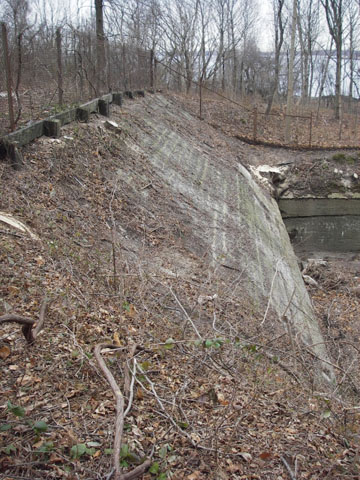  10-IMGP0467rRamps provided access to the Mortar Battery pits. Battery Overton Pit B (Building 127), looking west, December 2008. Data booth (Building 128A) at left. 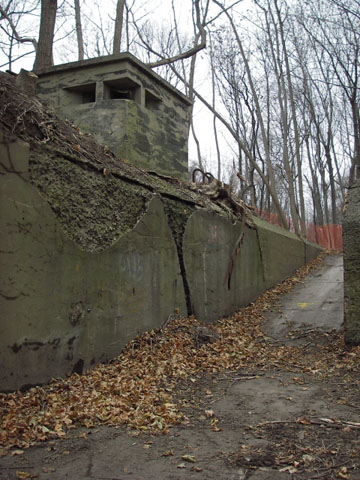  11-IMGP0347Building 128A, a data booth for relaying aiming and firing commands to mortar crews, Battery Overton Pit B, looking southeast, December 2008. 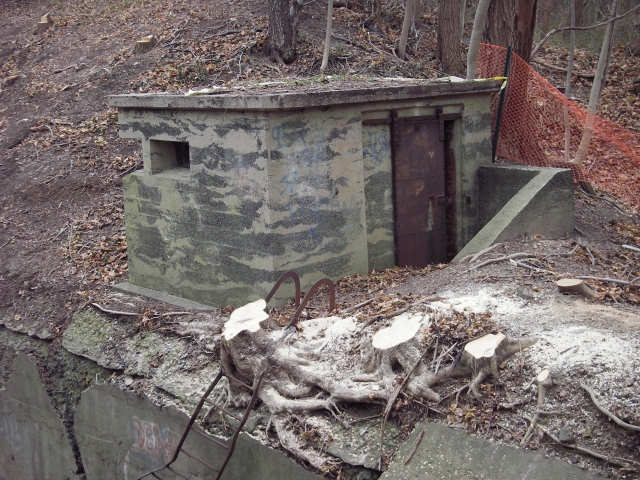  12-SE 128 PowerhouseMortar Battery Powerhouse (Building 128), west facade looking southeast, November 2006. When constructed, circa 1897, this building was largely covered by earth, which was removed in the 1950s. 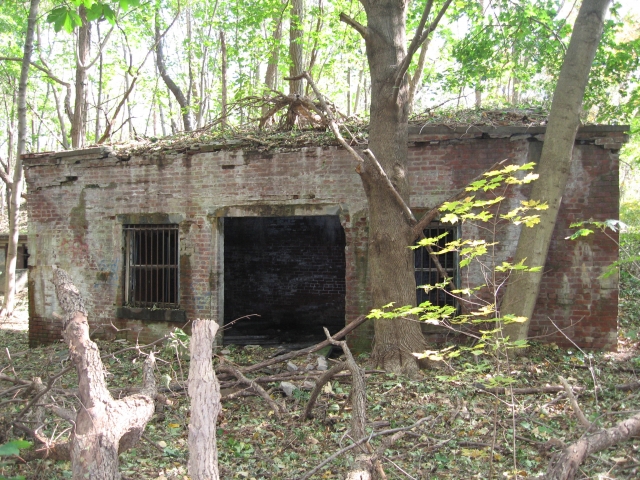  13-IMGP0574Tunnel entrance, Battery Haskin Pit A, looking southwest, December 2008. 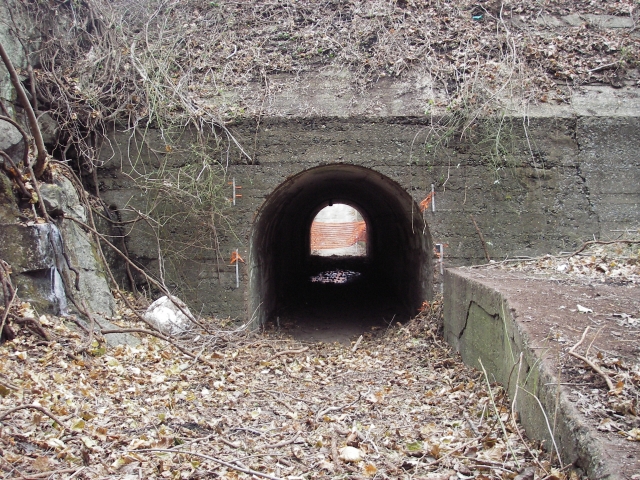  14-Tunnel to 125rTunnel connecting Pits B and A of Battery Haskin, looking northeast, November 2006.   15-IMGP0415mEntrance to the western magazine area inside the tunnel system of the Mortar Battery (with recent graffiti), looking southwest, September 2007.  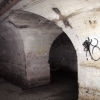
Fort Slocum’s Mortar Battery
The Mortar Battery had four pits, each of which mounted a cluster of four mortars. The battery was built out from a natural hill, and earth walls up to 30 feet high surrounded the pits. A tunnel system connected the pits and provided storage space for munitions. A separate room tucked into the side of the earthwork housed a gasoline-powered electric generator.
The earth walls and a design that blended into the surrounding landscape made this fortification typical of those built during the Endicott era. In contrast, previous generations of coastal fortifications relied on stone or brick walls for protection and often stood out prominently to menace an approaching enemy.
The Mortar Battery pits measured approximately 40 by 60 feet at floor level. They had thick floors and retaining walls of concrete. Each mortar was mounted in its own 16-foot-diameter emplacement set in the pit floor. The four mortars stood at the corners of a quadrilateral 19 or 20 feet on a side.
Every mortar had a crew of 12 to load, aim and fire it, and when all four mortars of a quad were in use, the pits were crowded with nearly 50 men. The crews drilled intensively to choreograph their activity, so they could work the weapons efficiently.
Fort Slocum’s Mortar Battery was among the first to be designed and built from Col. Abbot’s concepts. As Army engineers gained experience with this type of fortification, they refined the design, making the batteries more open with fewer mortars in each pit.
Deactivation and Later Uses
The Mortar Battery was in service for about nine years and never fired its weapons against an enemy. In 1906 it was deactivated, along with Fort Slocum’s other fortifications. The mortars remained in place, however, until 1919, when the Army removed and scrapped them.
With its armaments removed, the Mortar Battery became a piece of the post’s landscape that the Army could reuse for other purposes.
In the mid-1920s the officers at the post began to develop a small golf course. Eventually they placed two greens and several sand traps on the Mortar Battery earthwork. The old mortar pits were difficult hazards for golfers.
In the 1940s, as the post took on several training missions, the Army demolished Pit A of Battery Overton, the Mortar Battery’s northeastern quadrant, built a small arms firing range there. Later still, in the 1950s, the Army erected two buildings and three radar pads for Fort Slocum’s Nike missile battery on the old earthwork. During this period the Army began mining soil from the earthwork to use for construction projects elsewhere on the post.
Portions of the Mortar Battery, including three of the four pits, the tunnel system and altered sections of the earthwork, are still extant.
|


































